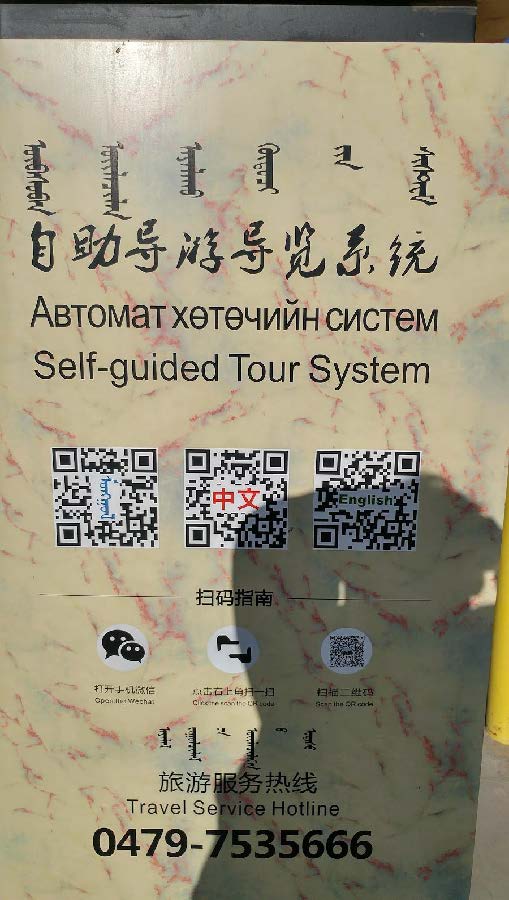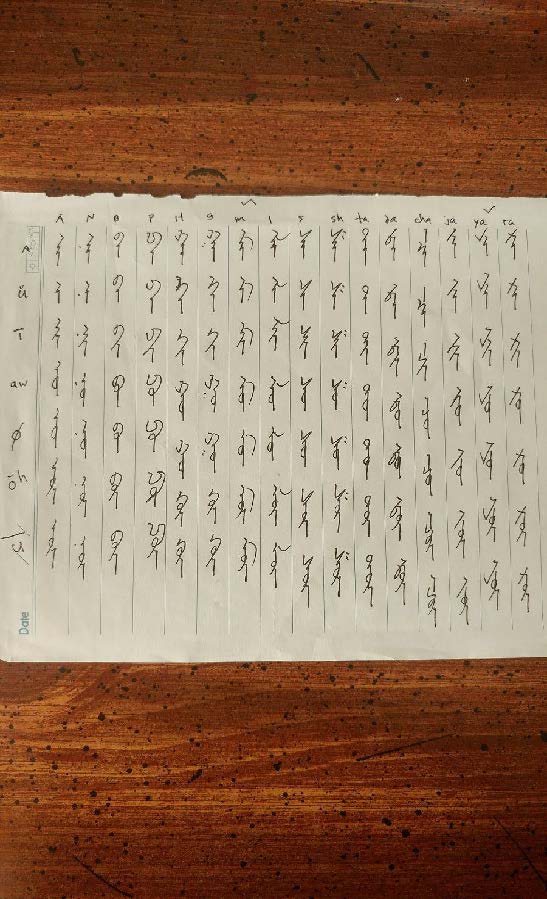Introduction
Well surprise surprise! The official language of Mongolia is Mongolian! Standard Mongolian is based on the Khalkha dialect in and around the capital city of Ulaanbaator. Foreign languages are not very common, but if you do find them you may run into Russian or Chinese speakers due to geography, though English is becoming more common among the young generation in the capital.
Wait, there are two writing systems?
The current alphabet used in Mongolia is based off of the Cyrillic alphabet used by Russia and other Slavic nations. If you speak Russian, you’ll have an advantage, though the letters have been modified for the unique vowels and consonants of Mongolian. There has been a recent move by the government to return to the traditional Mongolian script, which is currently used in the Inner Mongolian Autonomous Region of China. The traditional script is written vertically, from top to bottom, right to left. It looks like grapevines, snakes, or according to my good friend, “vertical Arabic”. Which is interesting because the traditional script originated from the Middle East as a form of Syriac, then evolved to Sogdian, then Uyghur as it went further east. It was adopted by the Mongols to communicate over their fast empire, as was also adopted by the Manchus.
Below on the left is a picture I took on the Mongolian/Chinese border. The top is a traditional Mongolian script with Chinese characters below it. On the third line, you’ll see Mongolian Cyrillic script which was borrowed from Russian, and of course English at the bottom
.
The picture above to the right is the traditional Mongolian alphabet that a friend of mine taught me.
Mongolian Language Family
This is hard to pin down and many scholars and linguists disagree as to what language family Mongolian belongs to. Mongolian, as well as all their various dialects, are part of the Mongolic family. Don’t be mistaken, the Mongolian spoken by Mongols in Afghanistan and the Mongolian dialects are spoken in Tuva, Russia are not always mutually intelligible. In fact, it is said that the isolation of the Afghanistan dialect is the closest thing that we have today to what Ghenghis Khan spoke.
Mongolic, as well as Turkic, Altaic, Tungusic, Japonic, and Koreanic were once part of a now semi-defunct language family called Ural-Altaic. There is much to debate as to whether Mongolian is an Altaic language, or just its own family; though the Mongols are distant cousins of the Koreans. With so much intermixing with the Turkic peoples of central Asia during the height of the Mongol Empire’s Pax Mongolica—Mongolian Peace—it’s hard to pinpoint which family Mongolian stems from.
Some basic phrases and counting
Below are basic numbers 1-10. Anglicized pronunciation on the left, with Mongolian Cyrillic on the right. Some sounds don’t exist in English so it’s pretty tough!
1 – nek нэг
2 – hoyor хоёр
3 – gurav гурав
4 – dururv дөрөв
5 – tav тав
6 – zurghaa зургаа
7 – doloo долоо
8 – naym найм
9 – yes ес 1
10 – arav арав
| Yes | Tiim | Тийм |
| No | Uguii | Үгүй |
| Hello | Sain Bain uu | Сайн байна уу |
| Thank you | Bayarlalaa | Баярлалаа |
| Good Bye | Bayartei | Б аяртай |
Well, now you have the bare basics of language. Mongolian is one of the hardest languages to learn. For most people, it takes a few months of full-time study until you can converse on a basic level with ease. Below I’ve provided some additional basic words. The vertical script is turned sideways so you can read the translations from left to right. This was a gift from a Mongolian friend when I was leaving the Winter Nadaam festival in the grasslands of Sunit, so this is my extra gift to you!








